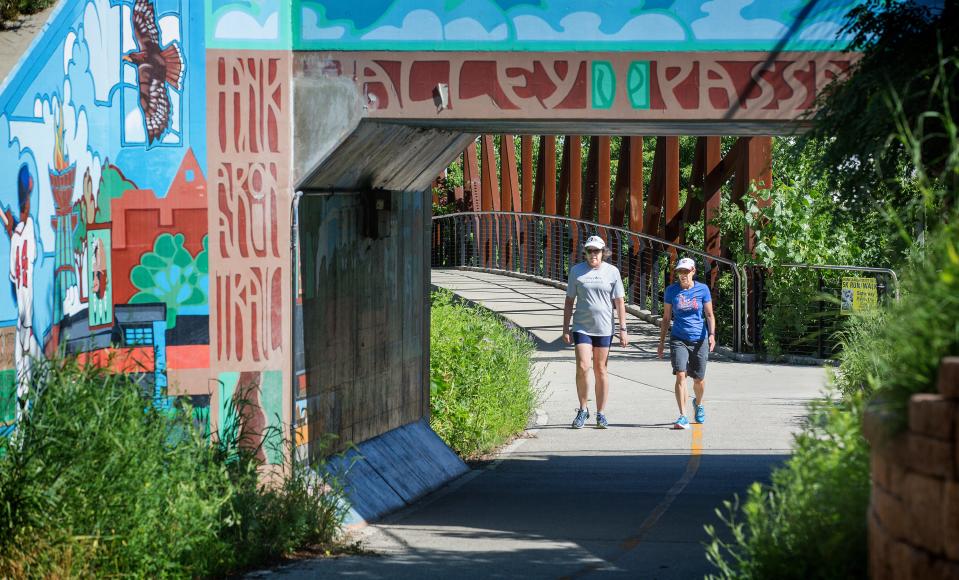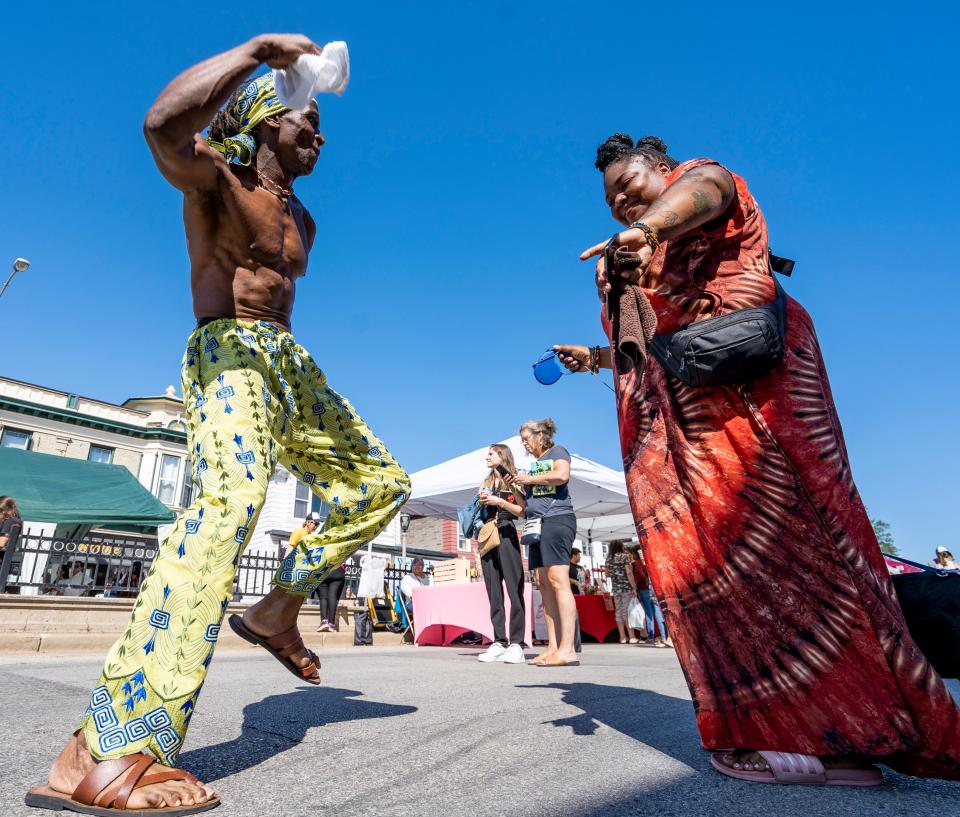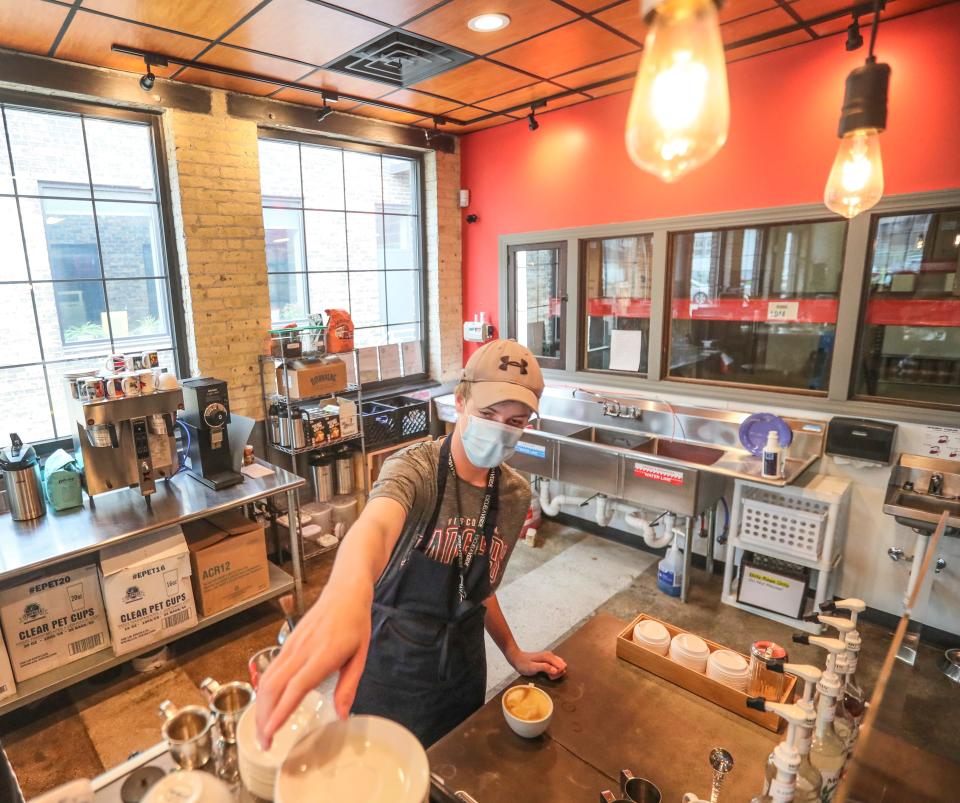A guide to Milwaukee's Silver City neighborhood
Where can you find steaming bowls of pho, a state trail in a revitalized river valley, a high school student-led coffee shop and salsa dance classes — all in one place?
Head to Silver City, a neighborhood on the southwest side of Milwaukee.
Where is Milwaukee's Silver City neighborhood?
Many call Milwaukee a "city of neighborhoods" — and the number of neighborhoods and their boundaries can depend on whom you ask.
The Neighborhoods In Milwaukee project, created by nonprofit Urban Anthropology Inc. defines Silver City's boundaries as: the Hank Aaron Trail near the Menomonee Valley on the north, West Greenfield Avenue to the south, and South 31st and 38th Streets to the east and west, respectively.

VIA Community Development Corporation, a group that's worked with residents in Silver City and the nearby Layton Park and Burnham Park neighborhoods, defines the community's boundaries on the east and west as South Layton Boulevard and Miller Park Way, respectively, according to its website.
Indigenous Potawatomi, Menomonie first called now-Silver City home before Europeans came for industrial jobs
Silver City is on the ancestral land of the Potawatomi, Menomonie and other indigenous people. Centuries before Europeans arrived in the late 1800s, they called the land in and around the Menomonee Valley home — as well as created and used a path that's now known as National Avenue.
The earliest Europeans to settle in Silver City included Germans, Irish, Scandinavians and Romanis, who came for fast-growing industry jobs in railroad, confectionery and manufacturing companies developing in the Menomonee Valley factories.
Area laborers and the silver coins they got as compensation in factories are to thank for the neighborhood's name today.
"When the workers circulated the silver among the area’s 24 taverns, the name “Silver City” began to appear in Milwaukee newspapers," according to the Neighborhoods In Milwaukee project.
Silver City was its own village of 2,000 people by 1900, but a series of fires prompted residents to call for more services and the village to join the City of Milwaukee.
Latino residents, especially Mexicans, came to Silver City from the nearby Walker's Point neighborhood, where they had been settling in since around 1920. More Mexicans, Puerto Ricans and folks from Central American countries came to Silver City in the 1970s.
Silver City was — and remains — a neighborhood with 'tremendous opportunity'
National Avenue became the main commercial corridor for the Silver City area. Despite hardships of the Great Depression, commerce was bustling on Silver City's stretch of National Avenue in 1933 with multiple grocery shops, butchers, pharmacies and a dentist.
The Valley Passage is a defining characteristic of the neighborhood, connecting Silver City to the jobs at the factories, said Adam Carr, a resident and local historian.
"Silver City was built as a blue-collar neighborhood when blue-collar meant middle-class," Carr said. Those jobs in the Menomonee Valley opened up "tremendous opportunity" for people in Silver City without a high school diploma to own a great home in the neighborhood they worked, Carr said.
Few of today's jobs in the Valley have the low bar to entry that manufacturing jobs once had, Carr said. Still, he said, opportunity is what continues to organize the neighborhood and Milwaukee's south side today.
Many current residents work as contractors, manufacturers, and professionals, or work in food service or health care. Slightly less than half of Silver City residents live in low-income households as of 2021, according to the Neighborhoods In Milwaukee project.
As of 2021, more than half of Silver City residents were Latino, and nearly half the population speaks Spanish as a first language, according to Neighborhoods In Milwaukee. German, Polish, Hmong and Lao residents also make up the current neighborhood.
Menomonee Valley's rebirth is a Silver City story
A gem in Silver City's recent history is the effort to revitalize the Menomonee Valley into an ecological and cultural hub by bringing it a branch of the Urban Ecology Center.
The Urban Ecology Center and Menomonee Valley Partners worked with city and state agencies to create Three Bridges Park, the center's branch at 3700 W. Pierce St. and an extension of the Hank Aaron State Trail through the valley.
The Menomonee Valley branch opened in 2012, "transforming a vacant tavern into an environmentally focused community center within the Three Bridges Park," according to the Urban Ecology Center website.

The organization offers hundreds of free and low-cost programs for youth and adults. Take a walk through two miles of trails, launch a canoe or kayak into the river, or enjoy the dozens of community gardens in the park.
Where to eat, drink or meet in Silver City
Milwaukee Journal Sentinel dining critic Rachel Bernhard said it best in her dining column on Silver City:
"Even with its small footprint, the neighborhood boasts a handful of remarkable and diverse restaurants representing cuisine from Asia, Puerto Rico, Mexico and America, all within about two city blocks of one another."
Here are a few of the spots that make Silver City so delicious:
Asian International Market, 3401 W. National Ave.
Orenda Cafe, 3514 W. National Ave., is a sunny cafe that serves breakfast, brunch and lunch.
Vientiane Noodle Shop, 3422 W. National Ave., is a spot for pho, curries and other Laotian cuisine.
Chicken Palace and La Jirochita, 3433 W. National Ave., offers chicken wings, Mexican fare and family-sized orders.
Bamboo, 3427 W. National Ave., serves Laotian and Thai dishes.
Mamie's, 3300 W. National Ave., is a cash-only neighborhood tavern known for blues music.
Newline Community Cafe, 3618 W. Pierce St., is a coffee shop largely run by students from the next-door charter school Escuela Verde. It opened in 2021 in the former home of Velobahn Coffee and Cycle, which closed during the COVID-19 pandemic.

What else makes Silver City great? Community-led art, events
Silver City's stretch of National Avenue has more than food. It's home to auto repair shops and legal offices, the Salsabrositas salsa dance studio and the Feng Shui Haus gift shop.
It's also where to find the headquarters of VIA Community Development Corporation, 3524 W. National Ave.
The group was originally founded by the School Sisters of Saint Francis and was later known as Layton Boulevard West Neighbors. Now rebranded as VIA or VIA CDC, it's focused on economic development and community building on Milwaukee's south side.
From neighborhood meetings to plant sales, to housing resource fairs and helping homeowners, VIA hosts programming that brings neighbors together.
VIA helps organize Phobruary, an annual event when local restaurants sell pho, a Vietnamese soup dish consisting of broth, rice noodles, herbs, and meat, at a discounted price all February.
VIA also helps host the annual Silver City InterNational Festival, a street fest that brings local vendors, dance groups, music, food and artists together to celebrate Silver City's diversity and culture. This year the festival will celebrate its 13th anniversary, and it is planned for Sept. 7 from noon to 5 p.m. on National Avenue between 32nd and 35th Streets.
Public, community-created artwork is another hallmark of the Layton Boulevard West neighborhoods. In Silver City, you'll see murals on building walls and garage doors.
The Menomonee Valley Partners has a map of public art, some of which is in the Silver City neighborhood, that you'll find on a walk or bike ride through the Valley.
New to the neighborhood? Here is how to access Milwaukee services
Silver City is located in the eighth aldermanic district. You can contact your local alderperson and find out news regarding the district at city.milwaukee.gov/CommonCouncil/CouncilMembers/District8
Silver City is located in the Milwaukee Police Department's District 2. Find out more information at city.milwaukee.gov/police/districts/District-2
Find your garbage and recycling schedule at city.milwaukee.gov/sanitation/GarbageRecyclingSchedules
Learn how to register to vote and find your polling place at city.milwaukee.gov/election/Voter-Info.
Want to get emailed updates about police activity, new development and more in your neighborhood? Sign up for the city’s e-notify system at city.milwaukee.gov/News-Events/enotify.
Find neighborhood schools, barbershops, tailors and other businesses and resources on the VIA amenities map.
Contact the writer at bfogarty@gannett.com.
This article originally appeared on Milwaukee Journal Sentinel: Here's what to know about Milwaukee's Silver City Neighborhood

